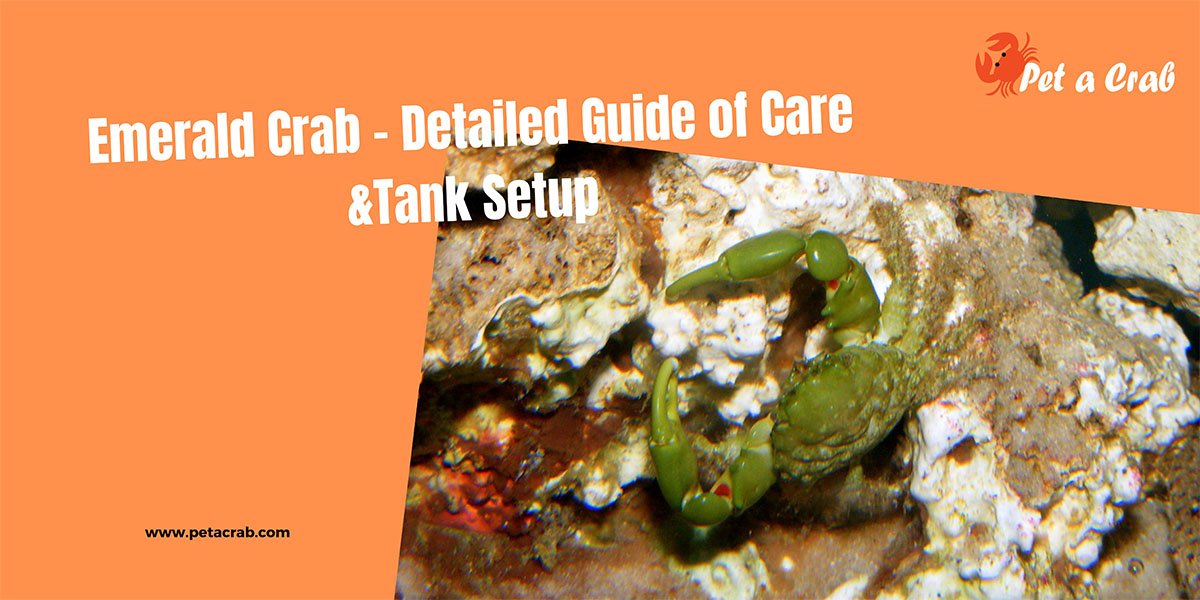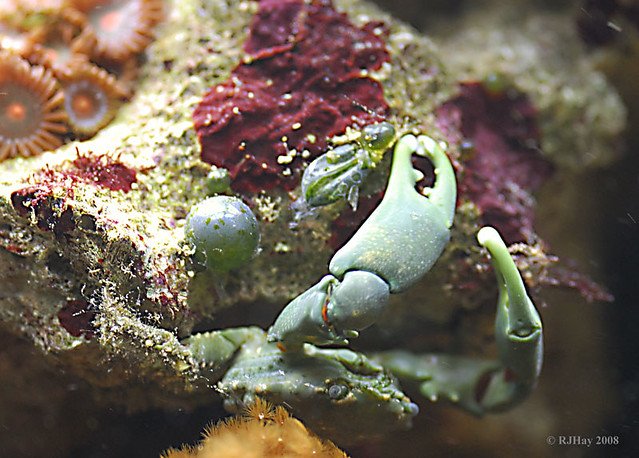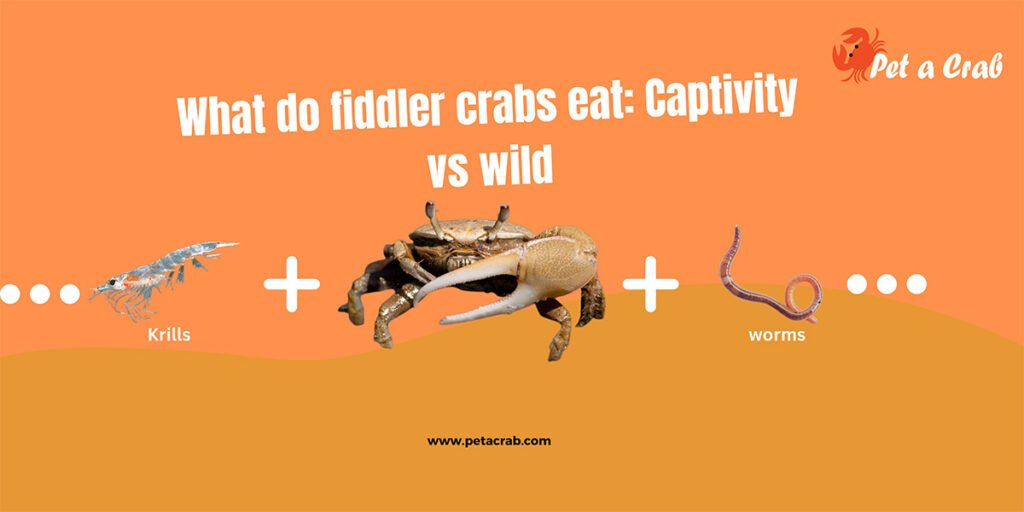Meet the emerald crab, which is a true hidden gem in the world of marine aquariums. It is one of the most versatile and useful algae eaters in the reef aquarium. Besides that, they are also best known for eating bubble algae.

However, these captivating crustaceans are well renowned for their vibrant emerald coloration. In maintaining a clean, harmonious aquatic environment, these beautiful species play a vital role. In general, their stunning emerald green exoskeleton can help make them stand out in any underwater setting. Beyond their aesthetics, they are natural cleaners with a keen appetite for algae, especially the dreaded hair algae.
Today we will take a deeper look at this emeralds crab care guide, including their appearance, behavior, habitat, tank setup, etc. Besides, highlight what makes them such a great addition to saltwater aquariums.
What is an emerald crab?
An emerald crab is a small-sized crab also known as Mithraculus sculptus. It is a quintessential member of your tank cleaning crew. In the marine fish trade, they are very popular. They have carapace that is flat, shiny green, and finely sculpted with whitish material to the projections.
Due to their beautiful looks, the emerald anthrax crab is sought after. This is due to their healthy appetite for algae. In addition, they have a reputation for consuming forms of algae that can make them a good addition to the aquarium.

Scientific Classification Of Emerald Crab
- Scientific Name: Mithraculus sculptus
- Kingdom: Animalia
- Phylum: Arthropoda
- Subphylum: Crustacea
- Class: Malacostraca
- Order: Decapoda
- Family: Majidae
- Species: M.sculptus
Quick Overview Of Emerald Crab
- Name: Emerald Crab
- Diet: Omnivore
- Reef Compatible: Yes
- Care Level: Easy
- Maximum Size: 2.5 inches
- Tank Size: 20-gallon
- Water Paremeters: 72-78°F (22-26°C)
- Water Type: Saltwater
- Breeding: Difficult
- Temperament: Peaceful
- Color form: Green
- Lifespan: Upto 3 years
- Other Names: Emerald Mithrax Crab, Green Clinging Crab, Emerald Green Crab
Interesting Facts About Emerald Crab
Origins
The emerald green crab originated on the tropical Caribbean reefs. But since they have become a common sight in aquariums all over the world. With a bright green or greenish brown color, they are distinguished by their two large claws.
Usually, they are peaceful, which can help them be considered a good choice for an aquarium.

Appearance
Mithraculus sculptures get their name from their color. All specimens are covered with a deep green hue. However, you might see some white spots around the carapace and claws. But the crustacean is predominantly green.
Their body is longer than its wide and the carapace is flat with a unique shape. Their legs are not only thin but also long and all are hairy. While the front claws are large and smooth.
Average size
The average size of the emerald green crabs is around 1.5 inches or larger once they reach up to 2.5 inches. However, when it comes to this species, there is a lot of variety in terms of size. Besides, you might see smaller specimens that stay at 1.5 inches.
Temperament and Behavior
The emerald crab is naturally peaceful. In good condition, they will not pay any attention to others in the tank. This means this species is perfectly capable of being aggressive. However, if the crab is not eating enough, they can also snatch small fish, snails and other invertebrates.
As we mentioned above, these crab creatures are largely nocturnal. During the day, they will spend most of the time getting comfortable.
Food and Diet

In nature, green clinging crabs are very easy to feed. They are also scavengers and omnivores, so they will eat everything. They always have a good appetite and will consume most foods without thinking twice.
Though they spend a lot of their time scavenging algae and scarps, they are known to eat bubble algae. If your tank does not have an adequate supply of algae, you can provide supplemental food to their diet, such as dried seaweed, commercial pellets and chopped shrimp.
Lifespan
In general, the emerald green crab’s lifespan is between two and four years. They are not living longer but they can outlive most cheap, cleaner shrimp. However, there is no way to guarantee life expectancy. Be careful about maintaining a tank and do your part to provide the crabs with a healthy diet.

How do I care for an emerald crab?
The Green Clinging Crab is extremely hardy and easy to look after. Also, they are quite self-sufficient in the right living conditions. With a bit of experience, their care is not a very difficult task. When the tank is low on algae, they will need just a bit of dry seaweed to keep them going. Also, if they are so hungry, they might try to eat other animals, such as snails and small fish. Here are a few care guidelines that can help you do just that:
Tank Size
For a single Mithraculus sculptures, the recommended tank size is 20 gallons of water. They can adjust to small tanks and flourish in the big ones. But to scavenge them requires a minimum amount of space. In addition, some aquarists have seen success with a density as high as one crab per 10 gallons. Therefore, to avoid their aggressive behavior, 20 gallons is always best.
Water Parameters
The emerald green crabs are adaptable to most standard reef tank setups. Usually, they are not particularly picky but they do have some preferences. For the best results, keep the water quality close to the following water parameters.
- Water parameters: 72°F-78°F
- pH Level: 8.0 to 8.4
- Water Hardness: 8 to 12 dKH
- Specific Gravity: 1.020-1.025
Common Possible Diseases
Most of the time, there are no diseases that can attack the Mithraculus sculptures. But as the species is susceptible to all of the same health problems that usually marine invertebrates can experience. One of the most common diseases is shell disease, which is caused by a virus. In this situation, avoid any copper-based medicines. Because they cannot handle metal.
Frequently Asked Questions
Are emerald crabs reef-safe?
Yes, they are reef-safe and do just fine with reefs. But you must keep an eye on them. Monitor them closely and make sure to remove the crab from the habitat if you notice any damage to your reef aquarium.
What should I put in a green clinging crab tank?
Usually, you can start with a layer of fine sand and create an arrangement of live rocks. The rocks can also accumulate algae and turn it into a valuable food source. Simple plants are good too.
Who are the best tankmates of Emerald Green Crab?
Due to their small size, they can overpower other slow-moving crabs and snails. So that larger and smaller fish can be avoided. Try to keep the species that occupy the parts of the water column, such as peaceful blennis and gobbies.
What do emerald crabs eat?
Usually, these crabs are scavengers and omnivores so they will happily eat leftover meaty food and clear nuisance bubble algae.
Related Article – Learn about Rainbow crab


